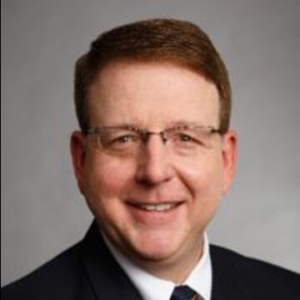Medical Devices are from Mars, Pharmaceuticals are from Venus. What can we learn from each other?
Medical devices and pharma: two sides of the same coin; significantly different but part of the same larger ecosystem. Dr. John Pracyk discusses the implications for Medical Affairs professionals.
So why have we called this piece Medical Devices are from Mars; Pharmaceuticals are from Venus? According to Dr. John Pracyk, it is a useful metaphor based on the classic relationship guide by Dr. John Gray: Men Are from Mars, Women are from Venus. Expanding on the analogy, he explains that the majority of Medical Affairs professionals in the medical device sphere are surgeons, whereas pharma is dominated by physicians. Beyond this, of course, there are other significant differences that stem from a close alignment between medical devices and therapeutic expertise.
 Dr. Pracyk, who is Worldwide Integrated Leader, Medical Affairs, Pre-Clinical & Clinical Research, for DePuy Synthes – Spine (part of the Johnson & Johnson stable), says: “It’s important because Medical Affairs is now aligning towards the fact that you’re most likely going to be working in an operating company in line with your sub-specialty training and board certification, along with operative proficiency and clinical practice experience, which will be at least a decade or more. After that you begin to have the skill set that industry is looking for. That’s decidedly different than Medical Affairs in pharmaceuticals, where there is a much more diverse range of clinical experience and educational backgrounds.
Dr. Pracyk, who is Worldwide Integrated Leader, Medical Affairs, Pre-Clinical & Clinical Research, for DePuy Synthes – Spine (part of the Johnson & Johnson stable), says: “It’s important because Medical Affairs is now aligning towards the fact that you’re most likely going to be working in an operating company in line with your sub-specialty training and board certification, along with operative proficiency and clinical practice experience, which will be at least a decade or more. After that you begin to have the skill set that industry is looking for. That’s decidedly different than Medical Affairs in pharmaceuticals, where there is a much more diverse range of clinical experience and educational backgrounds.
“In other words, to deliver the most value to the device industry we can only make the transition once we are board certified and bring a wealth of clinical practice experience to the table.”
Meanwhile, in pharmaceuticals, the classical model is an internal medicine residency with sub-specialty fellowship, or research training, followed by a highly variable period of time in clinical practice. Some physicians forgo residency and clinical practice entirely and make the transition to industry immediately following medical school or, alternatively, a post-doctoral research fellowship, while others have had meaningful careers in healthcare consulting.
The differences between devices and pharmaceuticals is especially significant from the perspective of the new European Medical Device Regulation that was passed on May 26, 2017 and comes into full effect on May 26, 2020, after a three-year phase-in period.
“Medical device companies need medical directors that have specific subject-matter surgical expertise that reads directly to the product portfolio. Why? Because the MDR credentials section has become more stringent, as have the state-of-the-art requirements – these require medical affairs surgeons to have deep clinical insights into a specific therapeutic area, as they are medically responsible as signatories for the Clinical Evaluation Report, (CER) which is the formal application for the CE mark in the European Union. For example, as a spine fellowship-trained neurological surgeon, it is quite appropriate that I lead medical and clinical affairs for our spine platform. Similarly, orthopedic surgeons lead trauma and joint reconstruction, whereas an otolaryngologist leads our ENT platform.”
Beyond this, there are further differences between devices and pharmaceuticals in terms of Medical Affairs’ scope of responsibility. “Typically, Medical Affairs in pharmaceuticals is primarily involved once the drug has launched. Clinical Affairs is responsible for all the pre-launch activities such as R&D and drug development. In devices, Medical Affairs spans that entire spectrum from initial ideation and front-end conceptualization through the stage-gate, development process, bringing that product to market and then launching it. It doesn’t stop there, as once it is in the field, maintaining it through its lifecycle and then removing from the market is also our responsibility. Medical Affairs in devices is subdivided into two major divisions, 1) Franchise, which is responsible for product development through the R&D pipeline all the way up to launch, and 2) Lifecycle, which picks up the product at launch and manages it through its entire lifespan on the market. We typically refer to it as ‘pipeline and portfolio ’: pipeline being franchise, portfolio being lifecycle.
“In pharmaceuticals, Medical Affairs is predominantly involved in the post-launch affairs, getting the product to market, medical communications, scientific engagements with KOLs, for purposes of studies, clinical trials, publications, podium presentations, and supervising all of the field medical professionals, such as medical science liaisons (MSLs).
“In devices, we are both internally and externally facing. For example, we work closely with Health Economics & Market Access (HEMA), to establish evidence of differentiated value to position products to successfully navigate value analysis committees (VACs). Similarly, we often oversee clinical investigational studies and investigator-initiated studies that support our products for purposes of safety and performance for our regulatory authorities. Internally, we work with R&D, Quality, Regulatory, Global and Regional Marketing in helping our colleagues understand what it’s like on the hospital and surgeon side of the equation.
“When I was practicing, I was the surgeon champion on the VAC for my health system. Now, I use that prior clinical and hospital administrative experience to help guide our interactions as a device manufacturer with the VACs of our customer hospitals and integrated delivery systems. Simply put, it is different ends of one vary large supply chain. Not surprisingly, I have also been involved in engaging our own contract manufacturers through speaking engagements and moderating panels at the Orthopedic Manufacturers Technology Exposition and Conference (OMTEC), as I now need to learn about how supply chains in industry work, while reciprocally informing our contract manufacturers on the global transition taking place clinically from volume to value that ultimately impacts their businesses as well.
Medical Affairs informs strategic decision-making
Medical Affairs is increasingly becoming a strategic partner for both commercial and R&D teams. “One way to look at this is through a go-to-market strategy that is refracted through the lens of three evidentiary audiences. The first is regulatory, where we must place the product ‘in country’. Next is hospitals/integrated delivery networks, where were we need to work with the VACs to get the product ‘on contract ’. Thirdly, we must secure reimbursement from the payers, whether they be private, commercial insurers, or government entities. As you can see, Medical Affairs is involved in a very broad range of medical and scientific engagement activities.
Diverse skillsets
Medical Affairs professionals in devices are fewer in number and require a very diverse skillset, whereas Medical Affairs in pharmaceuticals are far larger in number and, historically have been around much longer. “When you consider the sheer numbers of Medial Affairs in pharmaceuticals, both internally and with the MSLs in the field, it is literally an army. Conversely, on the devices side, we’re more of a ‘special forces’ model, where you just have a few people who are very specialized, but cross-functionally trained in diverse areas, which is a force multiplier.
So how hard is it to obtain the specialist knowledge and overcome the significant shortage of talent? Surgeons coming into Medical Affairs often have skillsets that are much in demand, beyond their specialist clinical expertise. For example, time spent learning how to develop a practice and building business acumen are highly prized in industry.
“Many physicians and surgeons are now going to business school to get their MBAs, while others have been involved in hospital leadership committees or have commercialized devices as an entrepreneur. These transferrable skills are valuable when you consider the range of activities that Medical Affairs delivers against: namely, understanding business operations, manufacturing, finance, accounting, communications, strategic development, and pre-clinical and clinical research – and being able to navigate the spectrum from bench top, to small animal, large animal, and ultimately first in human. Not surprisingly, surgeons who possess these essential business, research and clinical skills will meet with great success in devices.”
Leaving clinical practice
In pharma it is not uncommon for clinicians to maintain some form of clinical practice, which can take a variety of forms from an occasional clinic, to volunteering, or mission work. However, due to both legal and healthcare compliance issues, surgeons working in devices must stop operating and close their clinical practice upon entering industry. For a surgeon, who has spent years acquiring a unique set of skills this is a huge deal. Fortunately, maintenance of operative skills is accomplished through a variety of cadaver settings: wet labs, validation labs, and prototype testing.
Yet, there is one remarkable upside, according to Dr. Pracyk. “Believe it or not, we can secure visiting professor privileges anywhere in the world that permits us to scrub into surgery with key opinion leader surgeons – not to clinically perform the operation (in fact, we are specifically prohibited from touching the patient), but more importantly to observe, learn, and distill out the critical insights that help identify and address true unmet needs. The simple fact that this worldwide peer-to-peer surgeon exchange occurs from within the operative field is absolutely amazing.”
Lessons on both sides
“I think what pharmaceuticals can learn from the device side is that we are very good at these cross-functional skills.” Flipping it around the other way, what can devices learn from pharma? “I think pharmaceuticals has a much more thorough and deep understanding of ‘patient centricity’.
“In devices, the surgeon is the proxy for the patient. However, with the concept of surgeon employment and the advent of spine and brain institutes in neurological surgery or musculoskeletal institutes in orthopedic surgery, the multidisciplinary model of care is taking hold. Ultimately, the patient will be at the center of what we do and a more comprehensive approach to care redesign will certainly elevate patient centricity globally as the medical devices sector continues to learn, share and advance care more holistically like our pharmaceutical colleagues.




